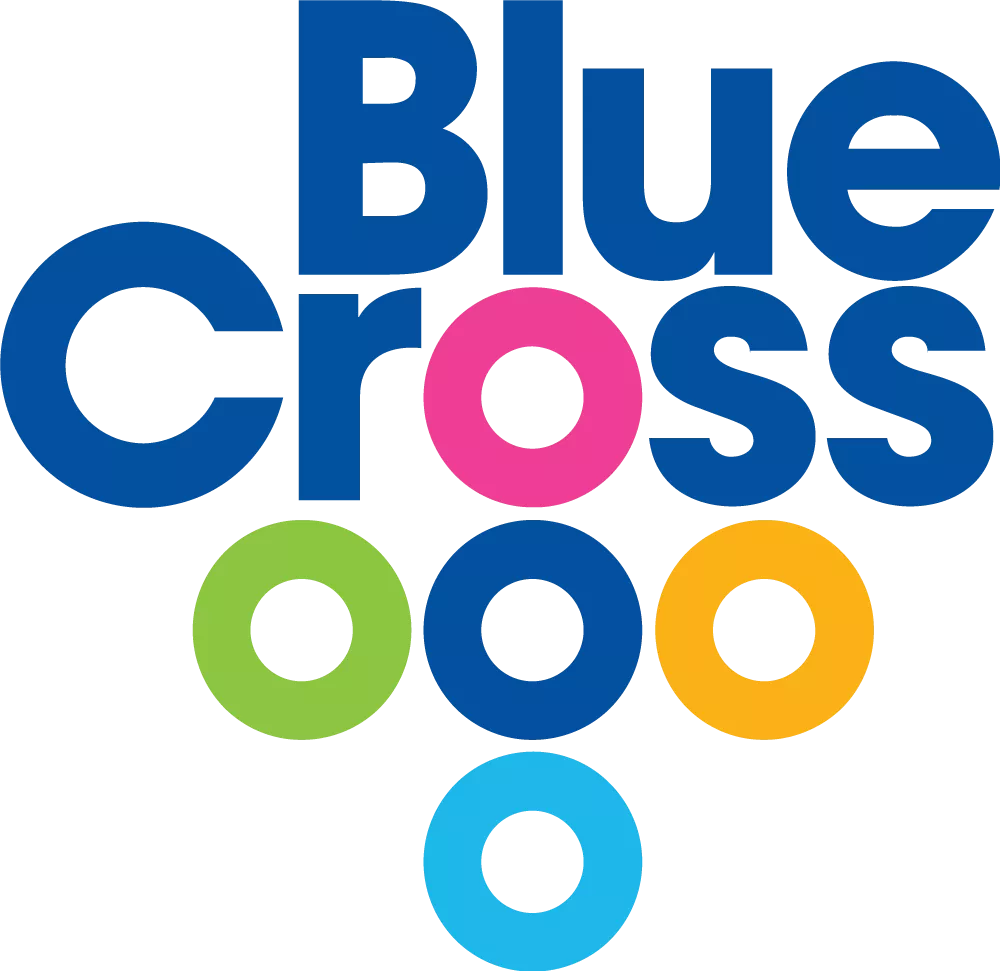


BlueCross, a private aged care provider, has been delivering a wide range of flexible and responsive aged care services across metropolitan and regional Victoria since 1993. With an operation spanning 32 aged care homes and three independent living communities, providing care for over 2,600 residents, and in-home care services to over 1,000 clients in their own homes, the organization required a new end-to-end solution to enhance financial reporting, budgeting, and data analysis.
With the Board Intelligent Planning Platform, BlueCross was able to adopt transformation across their financial planning capabilities. Automation helps to reduce labor-intensive processes, while a one-stop-shop for the finance and care home teams gives transparency over costs and budgeting.

BlueCross is a private aged care provider based in the State of Victoria, Australia, providing a range of aged care residences for over 2,600 residents, in-home care services to over 1,000 clients in their own homes, and retirement living operations.
First established in 1993 with a single care residence in Toorak, BlueCross has grown to operate 32 aged care homes – the vast majority in metropolitan areas – and three independent living communities. The organization also assists elderly residents living in their own homes, and veterans with home care packages and care provisions. BlueCross operates with the support of over 4,000 employees and hundreds of volunteers.
The finance team at BlueCross HQ manages business partnering across 32 aged care homes and the separate three independent living communities element. This operation requires a lot of work. Each month the finance team must provide a concise report, to the residence managers, on:
The team also provides operational support across all financial matters relating to BlueCross to drive financial sustainability.
Over time, it became apparent that the existing financial reporting process was a cumbersome and labor-intensive undertaking for the team. Data stored in large Excel files was already time-consuming to maintain. Building and presenting month-end reports created additional pressure; it could take up to a week to prepare, print, collate and add to an analog reporting book. The combined cost in time is significant. As well as faster, more reliable financial reporting, BlueCross is also looking to drive down labor costs, representing around 70% of the organization's total revenue.
With the legacy system at BlueCross no longer fit for purpose, a new end-to-end solution was required to enhance financial reporting, budgeting, and data analysis – driving valuable data insight to each business unit owner more accurately and swiftly. The outcome of this project would reduce the overall cost of time, increase the delivery speed of month-end reporting and budgeting, and enable a more proactive and data-led approach to operations and decision-making.
Following a search for the right digital innovation, BlueCross looked to Board's Intelligent Planning Platform to deliver the required transformation across financial planning capabilities. After discussing project needs with Board consulting partner LightARC, the highly flexible nature of Board proved critical as a deciding factor for selection. More specifically, Board would enable several key processes to simplify work for the BlueCross financial team and offer an enhanced view across budgeting for all unit owners. For example, the ability to link any system within Board's platform provides a single point of truth to drive powerful data analytics.
Additionally, Board's dashboarding and reporting capabilities enable the team to build rosters for each residential care home to give complete transparency over costs – quickly determining where the highest business costs are coming from and why. This level of support from the Board platform would ensure a smoother financial operation and simplified processes for the team moving forward.
Discussing the project, Paul O’Mahony, General Manager Commercial Accounting at BlueCross, notes, "We can break Board down into a couple of different big projects." Chief among these are labor analytics and financial reporting.
Labor at BlueCross is the highest financial cost, so having an intimate understanding of how labor impacts the business is critical for the finance team. Paul expands on this, "Labour within our aged care business is about 80% of our cost, 70-80% depending on the month, and so the main prerogative of Board was to get labor analytics working and operational." Fortnightly reporting was requested for residence managers at the care homes to review fortnightly labor hours quickly vs. budgeted fortnightly labor hours, identify any variances, and tackle them immediately. Paul continues,
This was our initial priority, really. The process took about two to three months to complete – by the time we had identified the data, completed the data dictionary with LightARC, cleansed the data through the integration process in SQL, and introduced Board for analysis and screen building, and data validation.
The labor analytics project results give the residence managers across the 32 care homes operating under BlueCross accountability for managing their labor.
The second critical project for BlueCross is a transformation across their financial reporting. The legacy process involved a physical reporting book prepared every month for a small number of senior executives. It would take a week for the finance team to prepare and bind them into the book. Paul reflects on this:
I said to my team that we're not going to do this. This is something that we're just going to stop, automate, get all the reporting done in Board, and leave the executives to go to Board as they see fit and look at whatever reporting they needed. We did this very quickly, and it has saved my team about a week of just hard task labor; it's given my team real-time back into their day to be able to focus on their business partnering.
Thanks to the time Board has given back through automation, the financial team has increased meetings with residence managers from zero to 32 every month. Business Analysts are now reinvesting their time to discuss several things that they simply could not before, such as what is working across the platform and what is not. Paul notes,
It's about building the link between operations and central office, which is making them feel more connected to what's actually going on. It is also driving the real business partnering between finance and operations.
For example, when they begin working for the organization, BlueCross care employees are allocated to a care home. During the initial six-month probationary period of employment, an employee may not physically work at that designated site. This means any accrued hours, such as annual leave or long service leave, are registered against the home they are allocated to when they have potentially not worked a single hour there. That home site's P&L increases as a result, so it does not accurately reflect its actuals. Paul says,
We've been able to make sure that the dollars are following the staff and get a much more accurate reflection of what we're doing on a monthly basis, which I think is very, very important. It's all just there in Board.
Another example looks at how Board positively changes payroll reporting through automation. The legacy payroll process took a long time in a large organization, such as BlueCross, operating across multiple sites with centralized financial reporting. One to two finance team members would spend up to a day and a half every fortnight preparing and sending payroll reports out of the system to each care home. These reports give insight into who worked at each site, so each residence manager can determine if they are paying the right staff from their care home's budget. Now, with the automation capability inherent in Board, reports are created in minutes.
Annual leave and sick leave data are also automated as part of these fortnightly reports – giving clear feedback to the residence managers about who has worked where, how many days they have had off sick, and how many days holiday they have taken or have left. Armed with this information, residence managers have more control to look at staff who have, perhaps, taken more days off sick than they have holidays and dig into why this is the case. The result of these automated reports, as Paul notes, is that residence managers no longer need to,
Bother looking at 600 people on a report. Instead, they can single out people with high annual leave and low sick leave and say these are the people who are not taking annual leave but taking sick leave; these are the people that we need to have a discussion with tomorrow.
Through Board, residence managers now have a one-stop shop for everything they need from a financial perspective. Reports are delivered in a shorter time with easy-to-extract insights, providing more time to look at real-time information, comprehend it, and make any necessary adjustments within their care homes. Residence managers now have 21 days a month, on average, to make improvements versus the six days average they had in the legacy way of working.
Board has now been rolled out to residence managers of all 32 care homes, who have reported that the flexibility and transparency seen across the system make it easy to use for non-financial staff. On the other side of this, the financial team notes a significant increase in business partnering functions because of report building automation and managing multiple reports to suit the different care homes under their jurisdiction. The transparency Board brings also means the finance team has a more comprehensive understanding of costs across the entire business.
Board continues to be adopted as part of the day-to-day for users as the level of reporting has evolved. Paul says,
Our engagement with the system has gotten better, and I think what we really see now is mass adoption at the operation space.
Board will become the differentiator for us because all of the residence managers have their data there. They know who's on leave, they know what their fortnightly hours are, they know who's going over, they know who is casual. Everything's at their fingertips.
Control measures are now in place to stop people from accessing data from multiple homes, meaning residence managers and operations teams have a unique login tailored to their own home. These users access the Board financial reporting system, get a snapshot of their leave, labor, P&L, and so on, and understand their costs and where else they can spend.
For example, BlueCross has created a dashboard for the Aged Care Funding Instrument (ACFI), an Australian Government subsidy that can be claimed for each resident that has entered permanent care. ACFI is a crucial revenue generator for BlueCross, so having a dedicated screen for every care home gives the operational user(s) precise, real-time data whenever they need it. Paul notes,
We've also streamlined all of their general ledgers on Board. They've got their ACFI; they've got their occupancy; they've got the resident data; they've got their labor data; they have allowances, leave, annual leave, sick leave, and general ledger data.
Users on the Board platform are not limited to finance and operations. Three levels of access have been created to accommodate a hierarchy of need, based on the user's status within the organization:
This flexibility enables BlueCross users to be able to access the data pertinent to them. For example, some users will need to access data that exists on a per-home basis and holistically across the entire business. Paul explains,
For example, you've got the General Manager of Allied Health, and they manage a hundred physios and occupational therapists across the business. They have full transparency of where their staff are across all the homes, and whether their costs have been appropriately allocated; built specific reports for them that get pushed out to their regional guys every month. So, they're getting good granularity and transparency out of it as well.
Furthermore, having access to real-time labor analytics and information reduces the "lag" seen in the old fortnightly reports. Operational users can now access Board day by day to understand how their staff are working. For example, has someone taken sick leave on a Friday and again on a Monday for a long weekend? Has someone worked extra hours when the budget is set for them to work less? More power and time are given to residence managers to look at where they can make improvements.
The benefits seen with Board have given a lot of time and agility back to the finance and operations teams. It also bridges the gap between them in terms of communication and goal alignment.
Integral to taking the use of Board ahead, the BlueCross finance team is working on mapping resident data. Currently, there are several weekly reports and a monthly KPI report run outside of Board. Collating the resident data and validating it within Board will add additional potential for automation. With financial reporting closed off within Board, the next natural step for the BlueCross team focuses on refinement. Paul says,
We probably need to get a bit more control and a bit more understanding about our allowances. And then to me after that, from a financial perspective, we should be good to go.
Following this fine-tuning piece, BlueCross's use for Board will extend beyond finance into a more operational platform – adding more automation to decrease inefficiency across the care homes and business. For example, service coordinators across the 32 care homes currently print off lists of every resident's name from one system. These lists are then manually entered into Excel spreadsheets and uploaded into another system. Not only is this a duplication of work, but it highlights the problems that exist when one system cannot talk to another.
Paul succinctly notes,
It kills me, that kind of inefficiency, and I really feel if we took the time to just sit with those people and work through what their daily tasks are, or what their weekly tasks are, there is 30% efficiency to be driven from linking our systems to make our operational model as it is now more efficient.
In a final statement about Board, Paul sums up its implementation:
I think we have a very good solution now that works well for us as a finance function. However, I would say that any reporting you already have, be prepared to turn it on its head and be a bit more fluid with it. Be prepared for some things that you weren't expecting. When you link data that doesn't have any linkage or link data you thought might have had no linkage before, be prepared for some things to give you a big shock. For us, we looked at sick leave and at annual leave, which we were expecting to give us a bit of information, perhaps about people who were being dodgy and going for sick leave instead of annual leave. But there have been several other things that have come out of that as well. We've been able to pinpoint staff well-being and do well-being checks with our employees. There are a number of things; ancillary benefits found with big data. Aged care, as an industry, probably isn't as well-known for its big data as retail and property – but I think we're getting there.